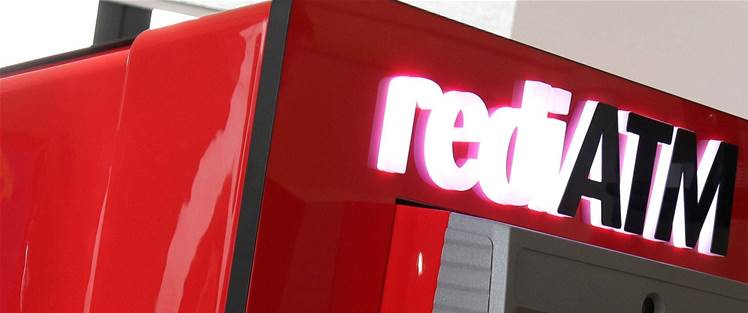The National Australia Bank (NAB) has quietly purged 1943 automatic teller machines (ATMs) from its once sprawling Australian network over the past year, turbocharging a wider push across retail institutions to ditch expensive cash machines and slash costs.

The epic cull is laid bare in NAB’s most recent financial results (H1 FY19).
It comes after the NAB unplugged its infrastructure from the once heavily promoted rediATM network, recently offloaded by CUSCAL, that was once used to widen fee-free cash machine access for customers rather than rolling out a proprietary fleet.
NAB’s financial statements reveal it now has just 926 ATMs in Australia as of 31st March 2019. That compares 2869 in March 2018 and 2695 in September 2018.
But the beleaguered upmarket institution is in good company.
Other banks have been hard-pruning too, as cash use falls and is displaced by tap-and-go transactions and mobile wallets.
Westpac’s interim H1 FY 2019 results state it culled 350 ATMs in the last half year, a number it stated was a 12 percent of reduction of its fleet. Westpac’s 2018 annual report states it pulled 400 ATMs landing at 3222, down from 3,665 the previous year.
The last annual report for the Commonwealth Bank of Australia (CBA) puts its group ATM fleet at 4253, though that includes New Zealand. The CBA’s most recent financial statements put its number of ATMs in Australia at “more than 3000” as it flexes its infrastructure muscle.
The CBA’s role in the great Australian ATM cull is a point of frustration for other institutions who suspect it’s a short term ruse to bounce them out of the cash game.
ANZ is also culling ATMs, though its numbers are more opaque.
Summer of our disconnect
NAB’s epic ATM disconnect officially kicked off on the first of January this year. It came after it was forced to join other Big Four rivals in scrapping the hated $2 non-proprietary ATM access fee that reaped retail institutions around $500 million a year for using another bank’s hardware.
The rush to remove fees was set off by the CBA, which has Australia’s largest ATM fleet, when it stunned the market by letting other banks’ customers use its ATMs for free in September 2017, drastically altering the underlying economics of proprietary and non-bank ATM networks.
Prior to the CBA’s fee-free ambush, banks and credit unions had sought to retain customer loyalty to by spreading their fleets across high traffic and convenience locations in addition to the classic bank branch ‘hole in the wall’.
Ironically, the current regime of ATM access charges were instigated by a 2009 Reserve Bank of Australia system reform that sought to level the playing field in terms of how banks charged each other for ATM infrastructure access when customers other than their own took out money.
Known as ‘direct charging’ the RBA reform abolished a previous system where instead of stinging customers up-front, banks quietly charged each other interchange fees for non-customer access that was then often margin padded and added to customers’ monthly statements – sometimes causing accounts to become overdrawn, attracting yet more fees.
The big bank ATM clip was particularly painful for customers of smaller banks and credit unions which could not compete on the number of locations until members of CUSCAL banded together to create a jointly owned ATM network that became known as rediATM.
redi. Set. Cull.
CUSCAL was not alone in seeing the writing on the wall for ATMs, recently offloading the rediATM network to Linfox’s cash logistics and cash in transit business Armaguard, best known for its armoured cars.
“The Armaguard Group has decades of expertise in ATMs, and currently provides services to the majority of existing ATMs in Australia. This purchase allows Armaguard to provide additional end-to-end currency and technology management solutions, and facilitates the continued provision of cash across the community,” Armaguard’s statement on the acquisition says.
“The ATM industry has evolved, and our business has changed. We strongly believe that this sale is the best way for our clients and their customers to continue to get secure, convenient access to their cash,” CUSCAL’s managing director said in the same statement in February 2019.
“We will continue to drive, switch and settle for ATMs, while spending more time on our core strategic areas of mobile, real-time and data-enabling our clients’ customers to make payments wherever they are, with whatever device they choose.”
Last machine standing
What NAB’s big purge really reveals is a push by institutions to divest from holding physical cash to try and avoid being the last ATM left in town.
It boiled down to a simple equation of institutions not being stranded as the last ATM in town or a mall, a risk amplified by the fact that major banks now eschew cross-charging.
Bank brands that were the last machine standing had the most to lose because they would ultimately cop the compounded heat, one senior banking source suggested.
At the same time, retail institutions are seeking to dial down the value of cash as the prospect of a common ATM utility brand is forged. Armaguard has an iron in that fire.
Watch this space.



_(20).jpg&h=140&w=231&c=1&s=0)







 iTnews Executive Retreat - Security Leaders Edition
iTnews Executive Retreat - Security Leaders Edition










_(1).jpg&h=140&w=231&c=1&s=0)



